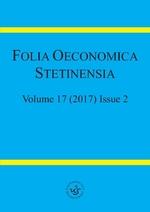Monetary policy and industrial output in the BRICS countries: a Markov-Switching Model
Monetary policy and industrial output in the BRICS countries: a Markov-Switching Model
Author(s): Adebayo Augustine Kutu, Harold NgalawaSubject(s): Economy, Business Economy / Management, Economic policy, Transformation Period (1990 - 2010), Present Times (2010 - today)
Published by: Wydawnictwo Naukowe Uniwersytetu Szczecińskiego
Keywords: monetary policy; industrial output; BRICS countries; Markov-Switching Model;
Summary/Abstract: This paper examines whether the five BRICS countries share similar business cycles and determines the probability of any of the countries moving from a contractionary regime to an expansionary regime. The study further examines the extent to which changes in monetary policy affect industrial output in expansions relative to contractions. Employing the Peersman and Smets (2001) Markov-Switching Model (MSM) and monthly data from 1994.01–2013.12, the study reveals that the five BRICS countries have similar business cycles. The results further demonstrate that the BRICS countries’ business cycles are characterized by two distinct growth rate phases: a contractionary regime and an expansionary regime. It can also be observed that the area-wide monetary policy has significantly large effects on industrial output in recessions as well as in booms. It has also been established that there is a high probability of moving from state one (recession) to state two (expansion) and that on average, the probabilities of staying in state 2 (expansion) are high for each of the five countries. It is, therefore, recommended that the BRICS countries should sustain uniform policy consistency (monetary policy), especially as they formulate and implement economic policies to stimulate industrial output.
Journal: Folia Oeconomica Stetinensia
- Issue Year: 17/2017
- Issue No: 2
- Page Range: 35-55
- Page Count: 21
- Language: English

